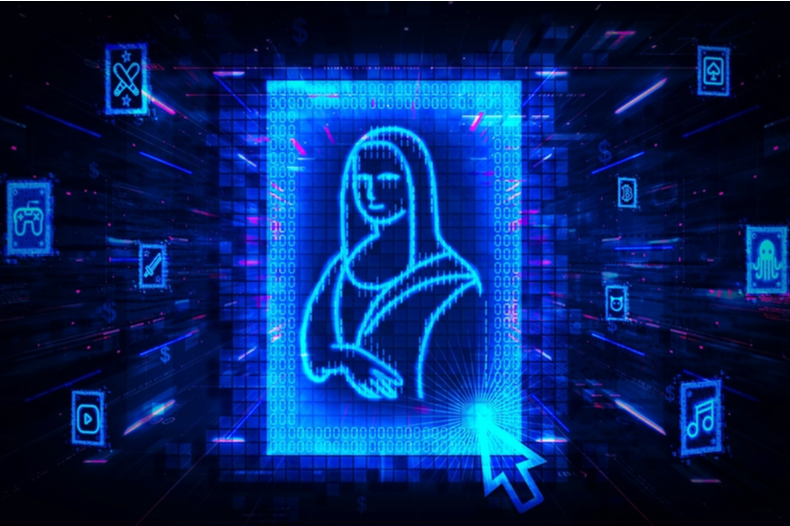Non fungible tokens: Between gold-rush fever and sustainable digital investment
In many ways, so-called "non-fungible tokens" or "NFTs" are currently the talk of the town.

Almost everyone has heard about digital artwork being sold at auction for high profits.
Beeple’s “EVERYDAYS: THE FIRST 5000 DAYS“ having been sold through Christie’s at a price of US $69m certainly made the headlines. NFTs are also increasingly used in other contexts.
They are rightly deemed to embody great potential in the broader context of digital business, notably for brands which are already well known. This make NFTs an interesting area for trade mark attorneys.
When taking a closer look, however, one realizes that NFTs are more of a vehicle to carry an asset rather than forming the asset itself.
Therefore, one could compare an NFT to a “digital key”, a unique access mechanism based on the blockchain technology.
Those who create the NFT have it in their hands decide what to place behind the virtual door and how many keys are produced in total. This shelters the asset away from the public domain and controls who is able to access it.
Technically speaking, the minting process leads to a smart contract written on a blockchain and linked to the actual asset. The smart contract is then stored on a server somewhere in the cloud.
Only the acquirer of the NFT can access the content. They may use it or simply show it around, and ultimately may sell it on to the next acquirer.
It is noteworthy to say that, in the digital sphere, there is no such thing as legal ownership. Whilst one can own a car, a loaf of bread or any other physical item, digital assets are – at the end of the day – some sort of data. Data can be linked to a person or company by means of proprietary allocation.
Personal data belongs to the individual it relates to, a trade secret belongs to the company that keeps the information confidential. However, there is no absolute and all-embracing concept of digital ownership (yet).
This is why NFTs always come with some additional guidance as to what the acquirer may or may not do with it. The basics are written into the smart contract itself. In addition, you commonly find terms and conditions governing the transaction itself, as well as the subsequent use of the NFT.
Turning to the actual asset the NFT relates to, we need to talk about intellectual property or IP in first place.
Currently, many NFTs relate to photos, other types of images, video sequences or music files.
All this digital content enjoys copyright protection and quite often trade marks are also in the game. If you think about the NBA’s Hot Shots NFT offering and the digital collectables one can buy, collect and trade, the concept becomes most obvious.
But it is not only about copyright and trade marks, it is also about the right to one’s own image and other personal rights.
So, if you want to launch your own NFT proposition, you need to make sure you have obtained adequate licenses to cover the IP that makes the NFT valuable.
The minting process, i.e. the actual creating of the NFT, is not much of an issue. There are service providers offering such services for fairly little money. However, the diligent obtaining and clearing of the IP rights is what differentiates the prospering business models from those that will struggle.
Generating an NFT and linking such NFT to a digital asset also brings with it the liability for the due possession of all rights and approvals to dispose of the digital asset. We have already seen the first legal disputes about copyright-protected works and trade marks having been used without adequate authorization.
The French luxury brand Hermès having challenged the artist Mason Rothschild for his MetaBirkin piece is only one of a growing number of examples.
Another highly important aspect related to NFT-based businesses is crypto currency. At the time being, any transaction involving NFTs requires a payment made by means of a crypto currency.
All parties to the trade require a crypto wallet in order to be able to participate. Of course, there are emerging services allowing the acquirer to use his or her standard credit card.
However, even with such a service being engaged, there is a conversion of the relevant fiat currency into crypto currency involved.
This means that any such transaction is governed by the new crypto regulations currently enacted by quite a number of countries. Such regulation is necessary to fight common grievances such as money-laundering and funding crime. As a consequence, building one’s own NFT proposition always involves the safeguarding of a legal compliance infrastructure.
One way to do this is to choose one of the already existing NFT marketplaces, the other way is to create and launch one’s own platform. Over the last year, a fair number of service providers have entered the market with white label offerings that allow for individual labelling.
The ultimate challenge is to develop a prospering strategy of how to shape and populate a successful NFT platform.
Depending on the digital assets and IP at hand, it can be recommendable to create a staggered offering involving, for instance, rare platinum content, highly valuable gold content, followed by some silver or bronze content in order to attract interest amongst several income groups.
Pricing in general is a challenge as NFT-based business are only at their dawn yet. The shorter the supply, the higher the price.
It is also possible to narrow or broaden the scope of rights that come with the NFT, by way of drafting the license clause respectively. Thus, there are many ways of how to structure and brand one’s own NFT proposition.

